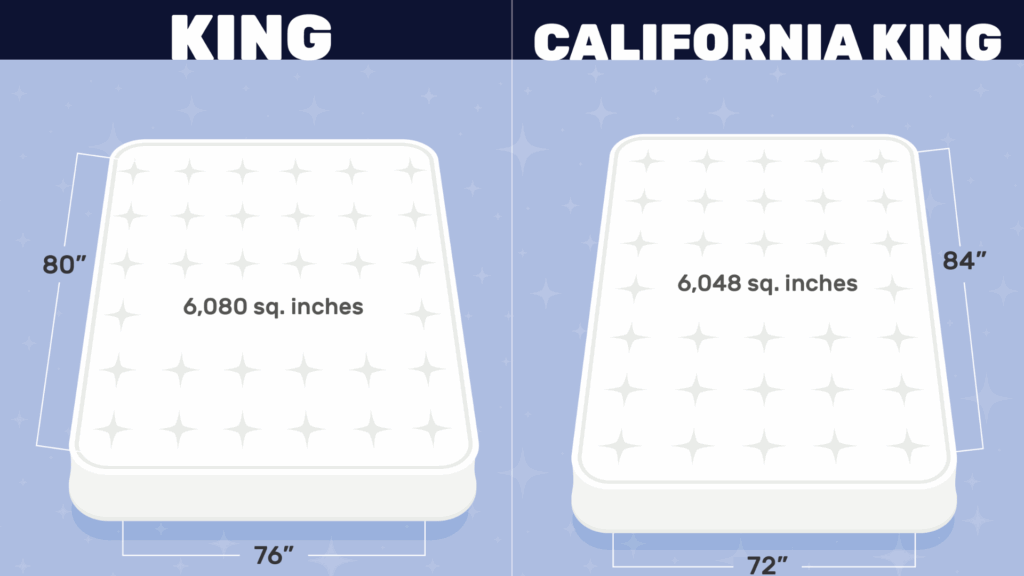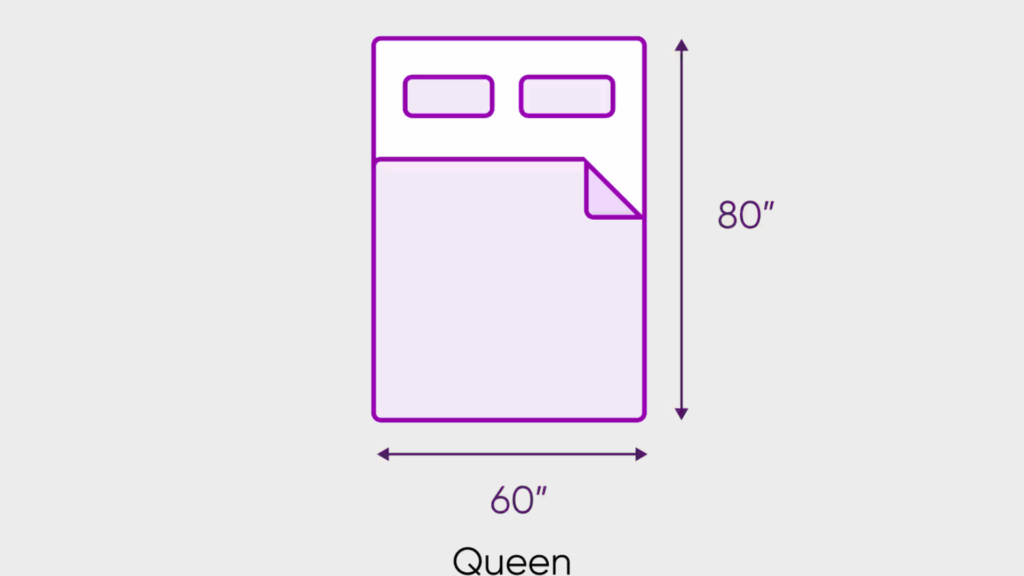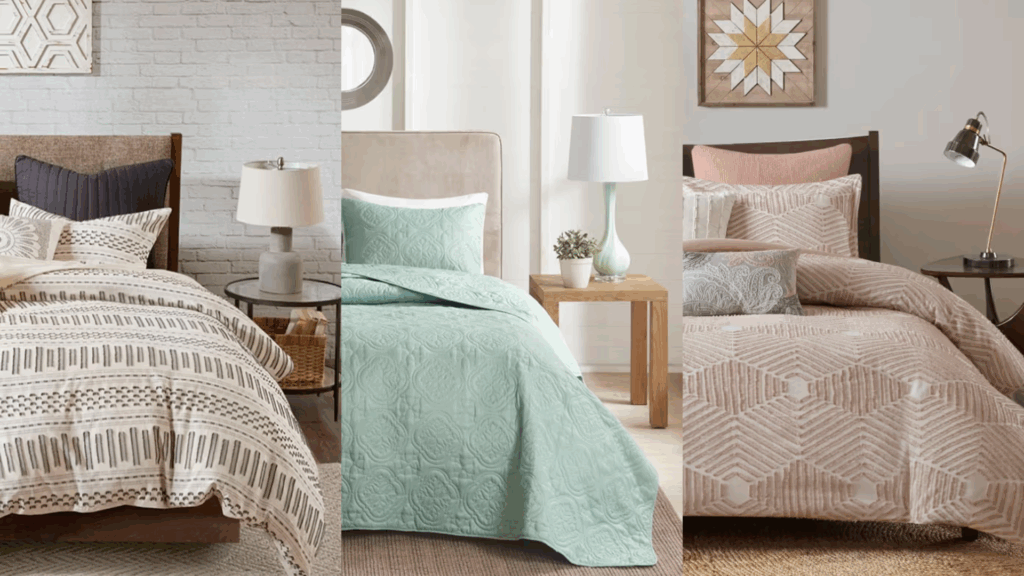What size is a king-size blanket, really, and how does it stack up against a queen?
I used to wonder the same thing when shopping for bedding. Between “king,” “queen,” and everything in between, it gets confusing fast.
If you’re here, you’re likely looking for the perfect fit and avoiding the hassle of buying the wrong blanket size.
I’ve spent more time than I’d like to admit comparing king-size blanket dimensions with other blanket sizes, especially when switching between bed sizes over the years.
In this blog, I’ll break it all down simply: dimensions, how they compare, and how to choose based on your needs.
This guide is based on real questions I’ve had and real purchases I’ve made, hits and misses included.
If you want straightforward answers about queen-size blanket dimensions and more, you’re in the right place.
Why Blanket Dimensions Matter More Than You Think
Blanket sizes can be surprisingly tricky. A few inches too short or narrow, and sleep gets uncomfortable fast.
King and queen-size blankets might sound similar, but they offer very different coverage, and that can make or break a good night’s rest.
I’ve had times when a blanket barely covered the sides of the bed or left my feet cold. It was frustrating, and honestly, avoidable.
That’s why it helps to know exactly what you’re buying before clicking “add to cart.”
Understanding blanket dimensions means less guesswork, fewer returns, and more comfort. From the way it drapes over the bed to how well it fits into a duvet cover, size really does matter.
Choosing the right blanket dimensions brings real benefits: better sleep, a neater-looking bed, and a blanket that actually fits your needs.
With the right size, your blanket becomes more than just bedding; it adds comfort, warmth, and ease to everyday life.
King Size Blanket Dimensions

A standard U.S. king-size blanket typically measures 108″ wide by 90–100″ long. This generous size provides plenty of overhang on a king mattress, which itself measures 76″ x 80″.
How It Fits
- Width: 108″ blanket – 76″ mattress = 32″ total drape (16″ on each side)
- Length: 90–100″ blanket offers 10–20″ extra at the foot or head
This ensures both sleepers stay fully covered, even if they move around during the night.
If you have a California king bed (72″ x 84″), look for blankets labeled California king, which are:
Narrower but longer: around 102–104″ x 106–108″
| Blanket Type | Blanket Size (in) | Mattress Size (in) | Best For |
|---|---|---|---|
| Standard King | 108 x 90–100 | 76 x 80 | Most king beds |
| California King | 102–104 x 106–108 | 72 x 84 | Taller users, longer beds |
Oversized or luxury king blankets (up to 130″ x 96″) suit deeper mattresses or anyone wanting full, draped coverage.
Queen Size Blanket Dimensions

A standard queen-size blanket typically measures 90″ x 90–100″ (about 229 cm x 229–254 cm). Most brands follow this sizing, though some may offer slight variations like 90″ x 92″ or 90″ x 96″.
How It Fits a Queen Mattress
A queen mattress measures 60″ x 80″ (152 cm x 203 cm). A 90″ wide blanket gives you:
- 15″ overhang on each side
- 10–20″ extra length, enough to tuck at the foot for most standard mattresses
This creates a clean, balanced look, offering full side-to-side coverage and comfort for solo or shared sleeping.
Can a Queen Blanket Work on a King Bed?
A queen blanket can technically be used on a king bed, but it’s not ideal for regular use.
Since a king mattress measures 76 inches wide and a standard queen blanket is 90 inches wide, you’re left with only about 7 inches of overhang on each side, barely enough to keep the edges covered, especially if two people are sharing.
While it may work for occasional use, light layering, or in guest rooms, a queen blanket often looks undersized on a king bed and won’t provide the full coverage or comfort most people expect.
This becomes even more noticeable if your mattress is thick or you tend to move during sleep.
Pros and Cons of King & Queen Blankets on Different Beds
Choosing the right blanket size can affect both comfort and style.
King Size Blanket
| Bed Size | Pros | Cons |
|---|---|---|
| Twin/Full | Ultra cozy, great for blanket sharing | Bulky and oversized; may drag on floor |
| Queen | Extra coverage for taller people or cold climates | May look too large or hang unevenly |
| King | Designed for full coverage; ideal for two people | Can be heavy and harder to wash or store |
| Daybed/Futon | Doubles as a coverlet or makeshift mattress cover | Too bulky; may overwhelm smaller furniture |
Queen Size Blanket
| Bed Size | Pros | Cons |
|---|---|---|
| Twin/Full | Lightweight and manageable fit | May not fully cover sides or feet |
| Queen | Perfect fit, balanced drape on all sides | None (ideal size) |
| King | Easy to fold or layer as a throw | Too small to cover both sleepers comfortably |
| Daybed/Futon | Great for minimal coverage or decorative purposes | Not ideal for full sleeping comfort |
King vs Queen Blanket: Quick-Reference Comparison
A king blanket offers generous overhang, making it ideal for couples, families, or anyone who likes extra room.
A queen blanket fits the bed more snugly and is easier to manage, especially for solo sleepers or lighter use. When sleeping alone, a queen blanket usually provides sufficient coverage without feeling bulky.
For couples, a king blanket can reduce cover-hogging and add comfort, especially if pets or kids join you in bed. If your partner tends to toss and turn, that extra width can make a noticeable difference.
| Feature | King Blanket | Queen Blanket |
|---|---|---|
| Standard Size (inches) | 108 x 90–100 | 90 x 90–100 |
| Ideal Mattress Match | King (76 x 80) | Queen (60 x 80) |
| Cold Climate Performance | Excellent insulation, less draft | Good on queen beds, may feel short in cold |
| Look & Drape | Luxurious, hotel-style drape | Fitted and neat on queen beds |
| On Non-Matching Mattress | On queen: full coverage, possibly touches the floor | On king: limited sides, not ideal for daily use |
| Ease of Washing | Bulkier, may not fit standard washer | Lightweight, easier to handle |
| Best Use Cases | Master beds, shared beds, layering | Guest rooms, solo use, minimal setups |
Pro Tip: Some couples with queen beds prefer a king blanket to avoid fighting for space. If you prefer easy care and less fabric, a queen remains a practical choice.
Buying Tips & Considerations
Choosing the right blanket isn’t just about size, material, weight, or season; maintenance also matters. Let’s discuss a few things I always consider before buying:
- Material Affects Warmth and Feel: Choose fleece for softness and warmth, cotton for breathability, and weighted blankets for calming pressure (best in queen size for easier handling).
- Match Blanket to the Season: Use thicker, warmer blankets like flannel or sherpa for winter. In summer, opt for lightweight cotton or bamboo to stay cool.
- King Blankets Need More Care Space: King-size blankets are harder to wash in standard machines and may require extra closet or linen storage space. Use compression bags for seasonal storage.
- Queen Is Easier to Manage: A queen blanket is lighter and easier to fold, move, or wash, making it ideal for smaller spaces, travel, or frequent use.
- Think Long-Term Use: Consider your climate, lifestyle, and laundry setup before choosing a size. Bigger isn’t always better if it’s hard to care for.
Conclusion
You came here to understand the real difference between king and queen blanket dimensions, and now you’ve got the full picture, sizes, fit, and what works best in real-life use.
I know how frustrating it can be to buy a blanket that’s too short, doesn’t drape right, or leaves one side uncovered.
I’ve been there, tugging at the covers or realizing too late that my blanket didn’t suit my bed or climate.
That’s why knowing the dimensions, use cases, and buying considerations, like material, care, and storage, is so important.
A blanket isn’t just about size; it’s about comfort, coverage, and how it fits into your daily routine.
I hope this guide helped you choose with more confidence and fewer regrets.
Take your bed size, sleep style, and comfort needs into account, and you’ll find the right fit every time.

